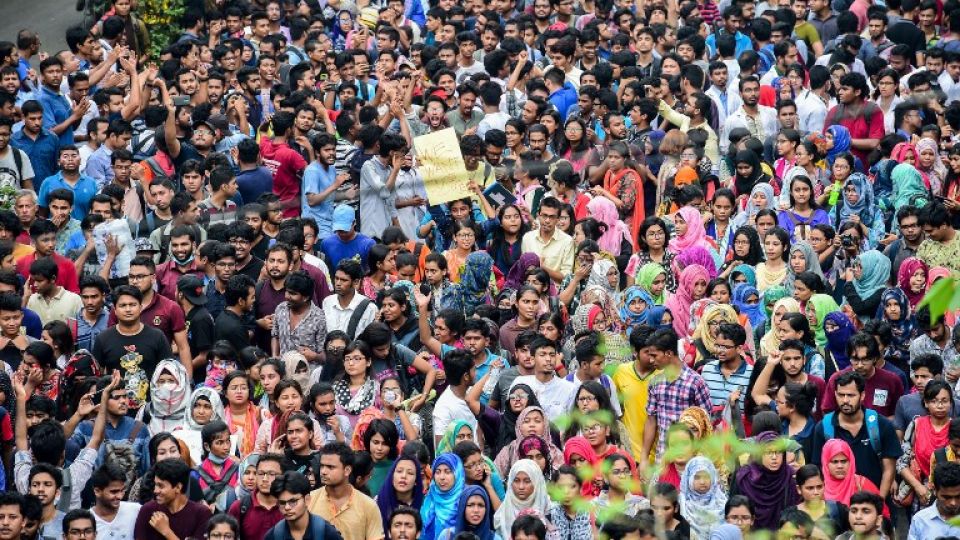March 6, 2020
So who is this ‘righteous’ woman that would never dare join Aurat Marchers?
‘TIS the season to be righteous, or so many prominent Pakistanis on TV and social media along with the religious right would have us believe. Pakistan suffers from hypocritical moral policing at the best of times — in homes, colleges and universities, places of religious worship, and the workplace — but the trigger for the current frenzy is the impending Aurat Marches in many cities of the country. Given that these marches only began three years ago, one can only marvel at how rapidly they have gotten under the proverbial skin of their highly agitated opponents.
Enough has been said and written about the wider context of the marches and why they threaten the fragile male ego in a society that is, by any and all accounts, amongst the most patriarchal in the world. There is considerably less discussion, however, around the primary line of argument of the haters; that the Aurat March is the preserve of a ‘particular’ kind of woman: loose in her morals and not representative of the chaste majority of Pakistani wives, sisters and mothers.
So who is this ‘righteous’ woman that would never dare join Aurat Marchers?
The following four real-life movements explode the myth of so-called ‘righteous’ women that permeates mainstream discourse. Many women participants of these movements seemingly conform to the stereotype of submissive, loyal subjects to male overlords. Many of them wear veils, are overtly religious, and keep their homes ticking over, day after day, through productive yet unacknowledged care work expected by a patriarchal society.
>Who is this woman who would never dare join the marchers?
First, the Baloch women and girls at the forefront of the struggle against enforced disappearances. Hardly anyone in the mainstream talks about it anymore, but the Long March of 2012 from Quetta to Islamabad was led largely by women. Before and after, Farzana Majeed and many other women have spoken truth to power in ways few men in this country would ever dare to. A young girl during the Long March, Maharang Baloch has since emerged as the leader of a new generation of students in Quetta and beyond.
Those who would depict Farzana, Maharang and others from brutalised ethnic peripheries only as sisters and daughters of the men targeted by the dastardly state policy of enforced disappearances, neglect that these women have challenged dominant patriarchal norms in their own societies. Women like Wrranga Luni at the forefront of the anti-war PTM represent a similar, holistic politics in Pakhtun society.
The PTM speaks also to the experience of Pakhtun migrants in urban centres who form a ghettoised working class, like those who lived in Islamabad’s biggest katchi abadi in sector I-11, demolished by state power in 2015. Women and girls living in I-11 were anything but integrated into mainstream urban spaces, and suffered multiple forms of oppression within and outside their homes. But their politics was clear, their resistance and sacrifice for their own homes bringing visibility to the cause of poor, working women all over the country.
In Christian katchi abadis, women face gender, caste and religious apartheid above and beyond the class hatred that sees them ghettoised as sanitary workers, maids and nurses. Their daily struggle is, again, indicative of a fully formed and independent worldview. They are often the primary earning members of the household, confident representatives of a vibrant indigenous culture, and at the front line of political mobilisation.
Last but not least are women who formed the vanguard of the peasant movement in Okara’s military farms. The canal colonies of Punjab have a long history in the annals of the British Raj, and later became a bulwark of militaristic Pakistani nationalism, with village society representing the patriarchal foundations of state ideology. The struggle of Okara’s peasantry provided impetus to the small number of politically conscious Punjabis that stand with ethnic peripheries and the working poor everywhere, against a military establishment that still depends largely on the consent of the Punjabi heartland.
The fact of women in Okara’s villages challenging patriarchal norms within the movement is not part of the conversation about it often enough because the symbolism of challenging the military’s corporate interests garners greater interest. However, this symbolism would not be commemorated but for women’s vanguard role.
I do not seek to romanticise the struggle of these women. They continue to face the wrath of patriarchy in all its insidious and overtly violent forms. But they are part of a long lineage of Pakistani women struggling for emancipation, of which the Aurat March is the latest manifestation. The mythical ‘righteous’ woman that opponents counterpose to the deviant-type is nothing more than a pillar of the propagandist narratives that sustain class, state, ethnic-national and patriarchal power in contemporary Pakistan.


